Updated 8/5/2025
Is your house exterior starting to look a little dingy? It may be time to clean your siding, or even have your entire house pressure washed, which typically only takes 3-5 hours depending on severity.
The fact is that the exterior of your home is exposed and subjected to a wide variety of weather and other natural elements that can build up over time. As rain, dirt, and debris begin to accumulate on the side of your home, it can quickly become unsightly and even decrease the value of your property.
In this article, we'll review how pressure washing (or soft washing in some instances) your siding is one of the most effective ways to clean the exterior of your home. Note that professionals may pressure wash siding, but it is with training and very likely using soft wash techniques. We don’t advise trying it yourself.
Different Types of Siding
Most people only think of siding as the vinyl siding that is available in numerous colors and textures found all over the country. But, in reality, the outermost layer of your home is the siding—also called the cladding. It isn’t one material or style, but rather that final line of defense keeping the elements out and the warmth, or air conditioning, inside. Here are the eight most popular types of siding found today.
1. Wood Siding
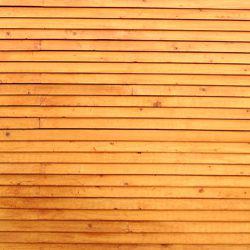 While wood is known for its aesthetic value, it’s also among the hardest to maintain. Compared to other types of home exteriors and sidings, it is more delicate and prone to damage, especially when using a pressure washer on a high setting. Without a strict care regimen, wood can rot and warp when exposed to moisture.
While wood is known for its aesthetic value, it’s also among the hardest to maintain. Compared to other types of home exteriors and sidings, it is more delicate and prone to damage, especially when using a pressure washer on a high setting. Without a strict care regimen, wood can rot and warp when exposed to moisture.
How to clean wood exteriors
Because wood exteriors are more delicate, we recommend soft washing them or hiring a professional.
Maintaining wood cladding
To protect wood exteriors, you can stain and use a clear sealant on the wood’s surface regularly to protect it from the elements. Also, consider painting it from time to time. Expect to paint it more often if you live in an area that experiences hail storms.
2. Vinyl Siding
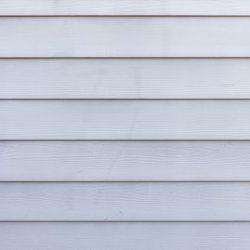 Unlike some other siding materials, vinyl can hold its integrity in harsh climatic conditions. It also comes with foam backing, making it energy efficient. And, if you particularly love the wood look, you can get vinyl with a wooden finish. This gives you the aesthetic value of wood, with the low maintenance and durability of vinyl.
Unlike some other siding materials, vinyl can hold its integrity in harsh climatic conditions. It also comes with foam backing, making it energy efficient. And, if you particularly love the wood look, you can get vinyl with a wooden finish. This gives you the aesthetic value of wood, with the low maintenance and durability of vinyl.
How to clean vinyl siding
While vinyl siding is designed to absorb shock (be it kids hitting the house or hail) it’s still best to use a lower pressure when washing the siding to prevent water from getting behind it. The good thing about vinyl, however, is that you won’t need bleach or other harsh chemicals. You can opt for a natural mixture of water and vinegar, or water and dishwashing soap. Wash the siding every 6 to 12 months or as needed.
Maintaining vinyl
The most attractive quality of vinyl is that of all siding materials, it requires the least attention. The color of the vinyl is worked into the panel itself, so you don’t have to worry about fading or repainting.
3. Stone Veneer
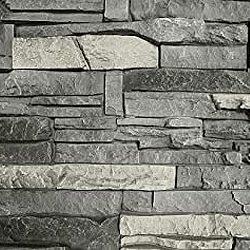 A popular and cost-efficient alternative to real stone or brick, stone veneer is durable and can be applied to most properties. In many cases, it can even make up the exterior layer of supporting walls to add the desired aesthetic. Cleaning and maintaining faux stone is simple enough as well.
A popular and cost-efficient alternative to real stone or brick, stone veneer is durable and can be applied to most properties. In many cases, it can even make up the exterior layer of supporting walls to add the desired aesthetic. Cleaning and maintaining faux stone is simple enough as well.
How to clean faux stone siding
With stone veneer, it’s best to avoid the higher pressure and heat of power washing. It’s also susceptible to damage from bleach and acid-based cleaners, so we advise using soft wash techniques with this siding.
Maintaining stone veneer
Stone veneer is incredibly easy to maintain as it doesn’t need to be cleaned that often. In between visits by the professionals, you can simply use a hose and water to rinse the exterior off.
4. Fiber Cement
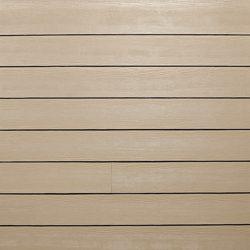 There are several reasons that contractors often recommend and use fiber cement siding with homes. Versatile, durable, and weather resistant, it’s a great alternative to other siding options and captures the look of wood better than other popular alternatives—most notably, vinyl. Like other siding options, though, there are a few things to keep in mind.
There are several reasons that contractors often recommend and use fiber cement siding with homes. Versatile, durable, and weather resistant, it’s a great alternative to other siding options and captures the look of wood better than other popular alternatives—most notably, vinyl. Like other siding options, though, there are a few things to keep in mind.
How to clean fiber cement siding
Like other alternatives, property owners should avoid pressure washing cement siding and should instead opt for a soft wash. While it’s difficult to damage this particular siding option, one of the few things that will do it is the high PSI found in pressure washing.
➡️Pro Tip: Did you know that concrete and cement aren’t the same things? The terms are often used interchangeably, but cement is actually one of many ingredients used to make concrete. As such, concrete is more durable—and grows stronger with age, in fact—than concrete. Because of this, you can pressure wash your driveway, but not your siding.
Maintaining cement siding
Because of its durability, fiber cement siding is very easy to maintain. Examine areas around windows and corners to ensure that caulking is still intact and keeping moisture out. When necessary, use a water hose and scrub brush with a gentle detergent in between soft wash sessions to refresh the siding.
5. Composite Siding
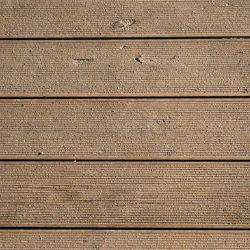 An inexpensive alternative to wood siding, composite siding is comprised of scrap wood that’s been compressed and glued together with resin. Not only is it affordable, it typically looks a lot like wood and has a range of colors, textures, and patterns that make it good for home designs that need flexibility.
An inexpensive alternative to wood siding, composite siding is comprised of scrap wood that’s been compressed and glued together with resin. Not only is it affordable, it typically looks a lot like wood and has a range of colors, textures, and patterns that make it good for home designs that need flexibility.
How to clean wood composite siding
With composite siding particularly, it’s important to avoid any harsh chemicals or high pressure washing. When hiring a professional for this—and we recommend it with composite siding—make sure they are qualified for the job. If property owners plan to clean composite siding, we suggest gentle detergents, scrub bushes, and utilizing a garden hose.
Maintaining composite siding exteriors
Due to the construction and manufacturing of this type of siding, it is prone to cracks. It’s important to inspect siding on a regular basis to catch smaller cracks before they have a chance to spread. Overall regardless of damage, though, most property owners will likely need to repaint every 10 or so years.
6. Stucco
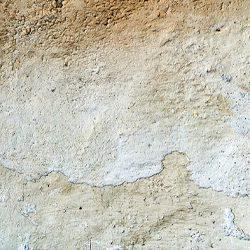 Stucco is a mixture of sand and cement installed over metal or wooden walls. Stucco siding with a smoother finish tends to show dirt easier than a rougher texture, but, overall, homeowners tend to love the look of stucco.
Stucco is a mixture of sand and cement installed over metal or wooden walls. Stucco siding with a smoother finish tends to show dirt easier than a rougher texture, but, overall, homeowners tend to love the look of stucco.
How to clean stucco
While stucco is durable thanks to the materials it's comprised of, how long it lasts depends on how well you care for it. To prevent damage, utilize soft wash methods; for second stories and higher, it’s best to call in a professional.
Maintaining stucco exteriors
Stucco is prone to cracking. These are typically hairline cracks that look awful and could deteriorate over time. Regularly investigate your walls for these. If some have developed, use a sealant to fix up the holes and cracks that show up. For second stories and higher, you need to hire a professional.
7. Aluminum
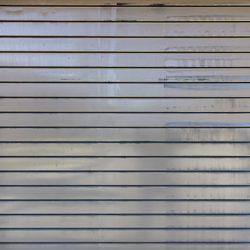 While not as common as wood or vinyl, aluminum is still a quality siding that some property owners choose. The positive aspect of aluminum siding is that it won’t warp, crack, or bend with age. The caveat being, however, is that it dents very easily. For property owners that prioritize aesthetics, this might be an issue.
While not as common as wood or vinyl, aluminum is still a quality siding that some property owners choose. The positive aspect of aluminum siding is that it won’t warp, crack, or bend with age. The caveat being, however, is that it dents very easily. For property owners that prioritize aesthetics, this might be an issue.
How to clean aluminum siding
Fortunately, aluminum is just as easy to clean as vinyl. A pressure washer is ideal for hard-to-reach and difficult areas, but many property owners opt to just get a bristled brush, water, and mild soap solution, then scrub top to bottom.
Maintaining your aluminum exterior
Aluminum siding is virtually maintenance-free given that it won’t rot or degrade. To remove a dent, you need to screw a hole into the aluminum. If you do this incorrectly, you could end up with more damage to your sliding.
8. Brick or Stone
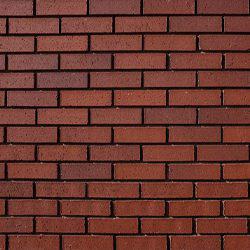 Both brick and stone work as a sound barrier and that same density also makes them more energy efficient. People also love the look, so it’s important to make sure that when learning about how to clean siding, you don’t inadvertently learn the wrong way and damage your home’s exterior.
Both brick and stone work as a sound barrier and that same density also makes them more energy efficient. People also love the look, so it’s important to make sure that when learning about how to clean siding, you don’t inadvertently learn the wrong way and damage your home’s exterior.
How to clean stone and brick exteriors
People don’t tend to think of these materials as siding, but they are. And, generally speaking, it’s a good idea for most siding materials to be soft washed rather than pressure washed. Pressure washing can loosen stone and bricks from siding, creating space for moisture to do expensive damage to your home or jeopardize your safety.
Maintaining brick and stone siding
Fortunately, these siding choices require little maintenance. Between professional pressure washing services, homeowners can use a gentle detergent and garden hose to freshen up their home’s exterior.
Determining if You Need to Pressure Wash Your Siding
One of the most obvious ways of determining if your exterior needs a good wash is by how it looks. Debris build-up and a dull shade are always a good indication, but there are some less obvious ones, as well.
These telltale signs are typically a dead giveaway that your home is overdue for a cleaning:
- Are the gutters overflowing? If leaves and various other debris have had time to build up in your gutters, it probably means that it’s time to wash your siding.
- Do you have cobwebs? It’s surprising how fast some spiders can make a cobweb, but when combined with other subtle signs on this list, cobwebs can sometimes indicate that it’s time to clean your exterior.
- Is there buildup on the roof? One of the most important parts of your home, your roof is prone to moss buildup, which can cause a lot of expensive damage. If there’s build-up on your roof, getting it off should be a priority—and it probably means your home as a whole needs attention.
How to Pressure Wash Siding
When using a pressure washer, it’s important to know how it functions and what the best techniques are for your needs. With pressure washing, safety needs to be prioritized.
Next, you’ll want to know when you need to use a gentler, soft wash method, but also every nuance of pressure washing from selecting the right machine to which nozzle should be used for what project.
➡️Pro Tip: Avoid damage by making sure you know what kind of siding you have before you get started. This will help you know if the heat from a power washer is best, if you need the gentler touch of a soft wash, or if the sheer force of a pressure washer is ideal.
Cleaning the exterior of your home is a time-consuming, tedious task that most property owners would rather not do. The fact is, you don’t have to.
As trusted professionals in all areas we serve, we offer professional pressure washing and soft washing services for all home exteriors, regardless of the type. With us, your home can look new for you to enjoy, or for your realtor to show off if your house is on the market. Explore our services today and experience the difference!
Frequently asked questions about siding type and pressure washing
Does pressure washing damage siding?
It really depends on the siding. Most siding is vulnerable to the intense PSI of some pressure washers, so very often overzealous and inexperienced cleaning can lead to damaged exteriors.
What PSI do I need to wash vinyl siding?
Vinyl siding, in ideal conditions, can withstand up to 3,000 PSI. That isn’t to say that it’s a good idea to use such intense pressure as it can cause dents and damage to vinyl siding.
Should I power wash my siding?
Typically we recommend using a soft wash method without any additional heat, such as what would be used with power washing, when cleaning your home's exterior.
How do you pressure wash house siding?
Generally, we recommend using soft wash methods for all siding to avoid any possibility of damage. Because of this, the process is fairly straightforward across all siding types. Be certain to avoid using bleach-based cleaning solutions with certain siding materials.
